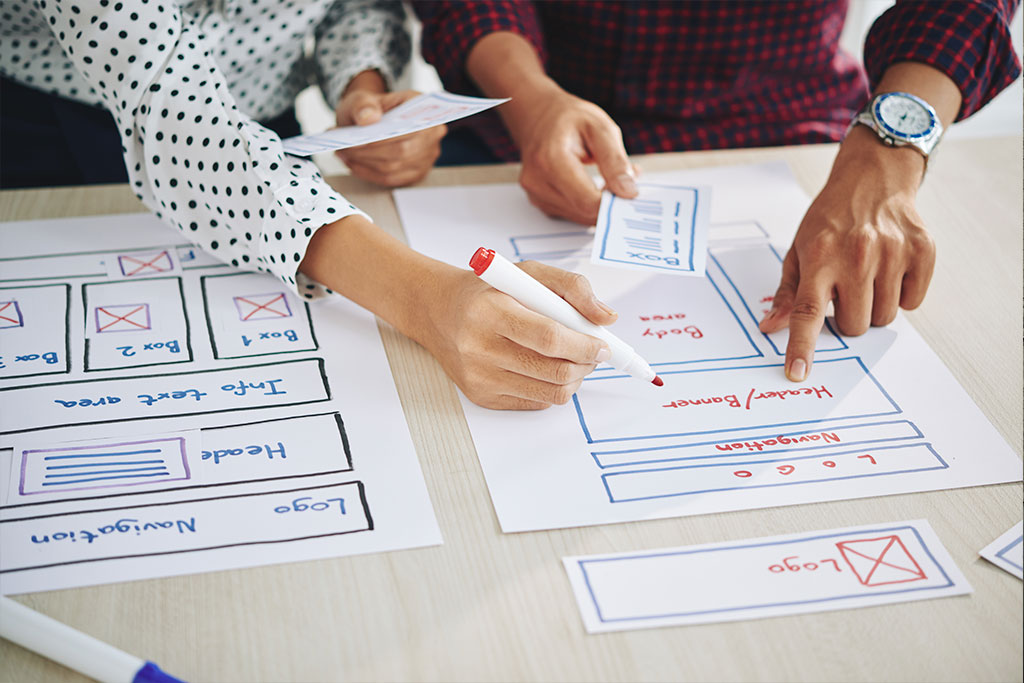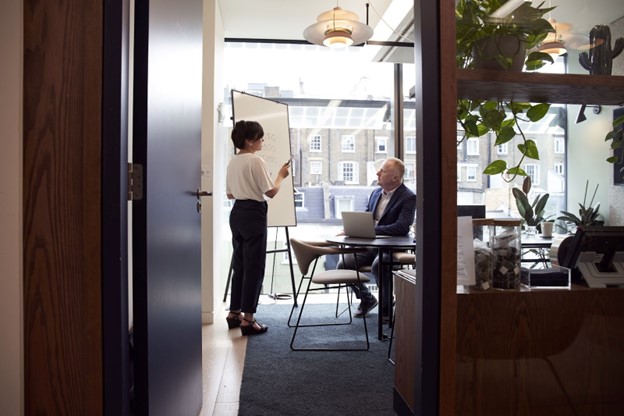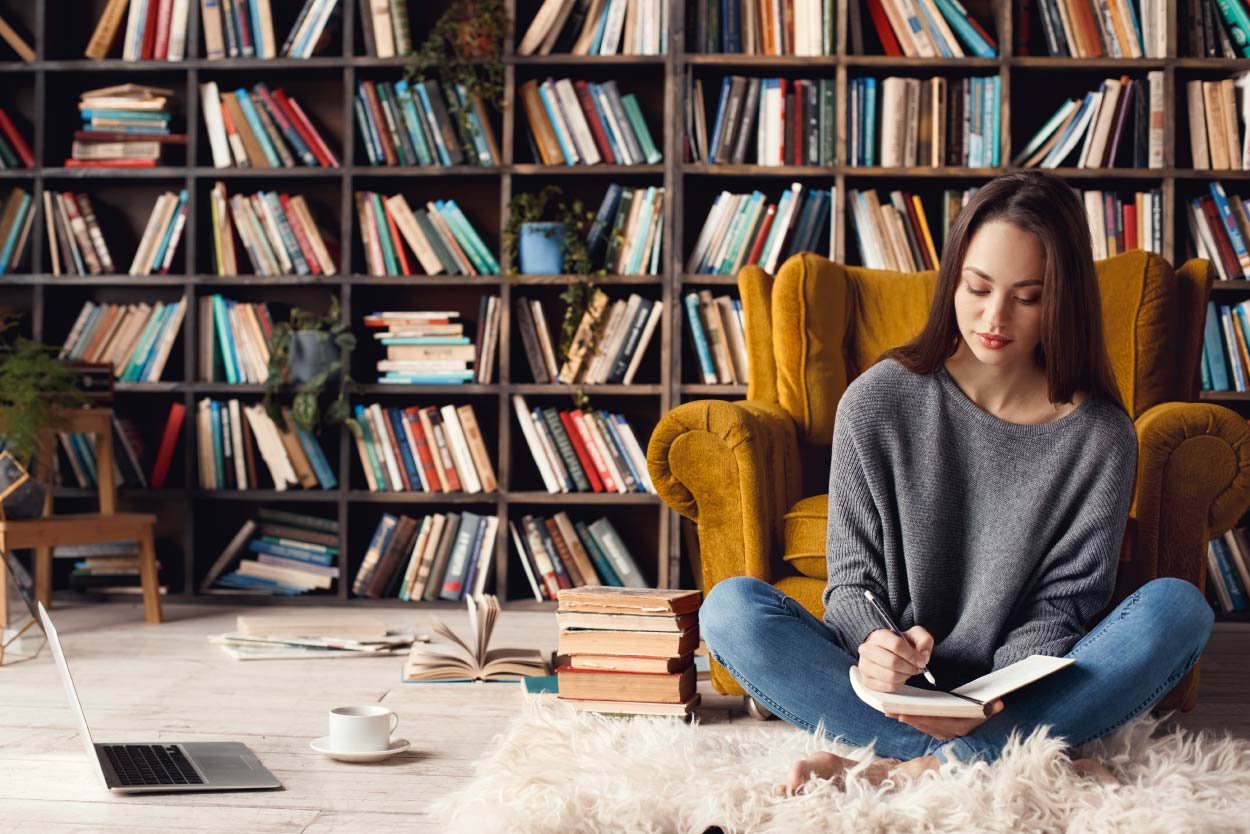How a Learning Consultant Improves Your Business | SkillSource
A learning consultant is a person who has professional experience designing curricula and training programs to improve the performance of employees...

When you set out to create a new website, app, game, or almost any digital product you will need designers. Designers are responsible for giving a digital product its structure, form, and appearance. There are many different types of designers, each focusing on one element of product design. To people outside the design industry, user experience (UX) and visual design might sound like the same thing, but in actuality, the two terms refer to two very different jobs. While UX and visual designers have different jobs, both roles exist to solve the same problem: how to help people use a product with ease. By taking a look at the differences between UX and visual designers we can determine how each role contributes to the successful design of a product.
UX design focuses on the user’s experience, which is the overall experience a user has with a product or service. User experience determines how easy it is for a user to interact with or use each element of a product. UX designers are all about helping users accomplish their tasks quickly. The goal of UX design is for the user interface to enable a user to use a product as efficiently as possible. The design of menus, buttons, layouts, and overall structure should guide a user through the “flow” of a product. A user should be able to navigate a product through pathways that make logical sense and are intuitive.
Imagine walking into a house that just feels right. You reach for a mug and it is right where you expect it to be. The light switches are exactly where you would want them to be. It feels as if the house has been designed specifically for you to live in. This is what good UX design looks like.
Now imagine that the perfect house is an app. The button to open a new project is in the right place and using the app feels intuitive. A lot of research is done to achieve this level of design. A UX designer needs to understand what a user wants and expects. A good UX designer will pull from fields such as psychology, graphic design, and human-computer interaction to best understand a user’s needs.
UX designers usually begin working on a product early in its development since UX is core to the basic structure of a product. A UX designer uses a variety of processes and tools to create their designs. These include interviewing people to understand the business goals of the product, creating prototypes for testing and iteration, and direct testing with customers to make improvements based on feedback. UX designers use programs like Adobe Illustrator to physically create layouts, but research tools like Usertesting.com and Hotjar are also invaluable. Perhaps the favorite tools for UX designers are simply sticky notes and a whiteboard.
While UX design is largely visual, UX design is generally not concerned with aesthetics. If a product is easy to use but ugly, a UX designer is still satisfied. Function is prioritized above appearance in UX design.
Visual designers join a project after UX designers have laid out a product to make it visually appealing. This means designing color pallets, fonts, button styles, animations, diagrams, and any other visual element. All of these visual design elements should make things clearer for the user, helping to guide them through the product. UX design should be augmented and complemented by visual design.
Visual design is also where marketing and branding come into play. Color schemes can tie a product back to the company that makes it, which helps the company name stick in a user’s mind. Adding visual elements like company logos or other images also reinforce branding through visual design.
Visual designers need to research visual trends and what is “in fashion” so their designs reflect the current time. For example, website designs from 10 years ago are very different from what is in style today. The visual design also must obey common-sense rules; a red rhombus-shaped button creates a specific expectation in a user’s mind about what that button will do and that expectation should be followed to keep the user experience intuitive.
In this multi-screen era, devices can have any size screen and design must be able to adapt to each size change. A successful design will look good on a mobile phone or a computer monitor. Rather than creating new designs for each screen size, visual designers make one version that scales to match the screen size.
A visual designer’s goal is to make a product beautiful, but this can come at the cost of functionality. How many times have you seen a paved walkway next to a stretch of grass, but the grass has a worn foot-path through it. This is an example of design not following what a user wants or needs. The paved path may be pretty, but it is not efficient. Visual designers and UX designers must work together to create a product that achieves functionality and visual attractiveness.
Both UX and visual designers are vital roles in product design. A product cannot be well designed without the work of UX and visual design. Understanding and respecting the differences between the two roles allows each specialty to shine by doing what they do best.
Clarity is of the utmost importance in UX and visual design. When UX and visual design combine with learning and development, you arrive at instructional design. High-quality instructional design means applying appropriate structure and proven design elements to engage learners, improve retention, and allow even the most complex topics to be easily understood.

A learning consultant is a person who has professional experience designing curricula and training programs to improve the performance of employees...

How to Transition Your Team to Remote Work The transition to working from home can go seamlessly for some and pose some unforeseen issues for...

If you want to create a strong, competitive workforce for your company, you need to consider incorporating AI into your learning and development...